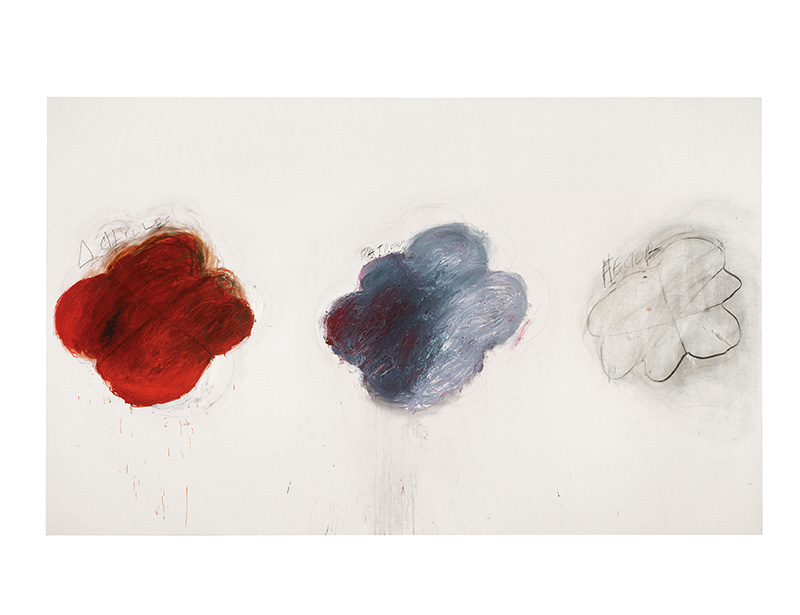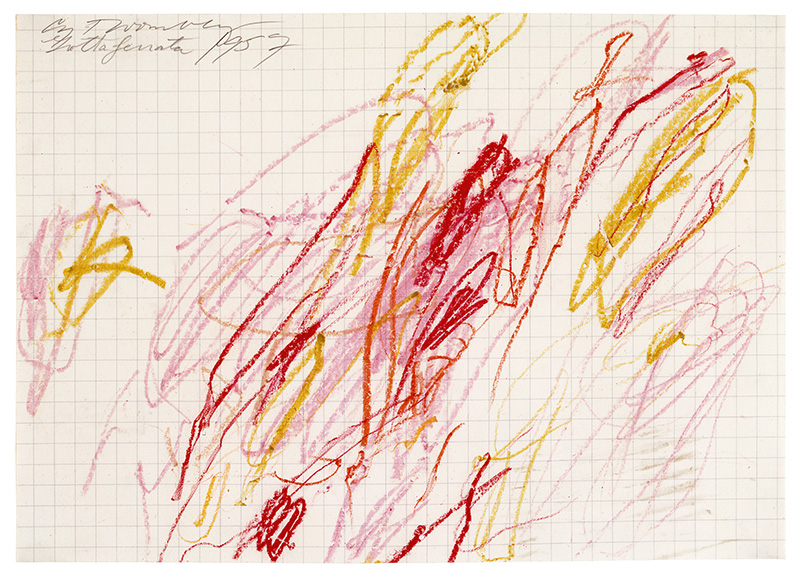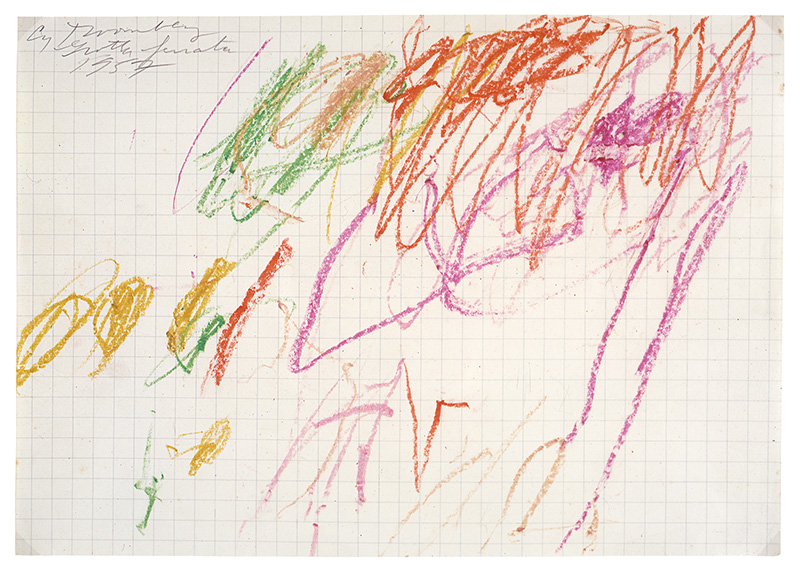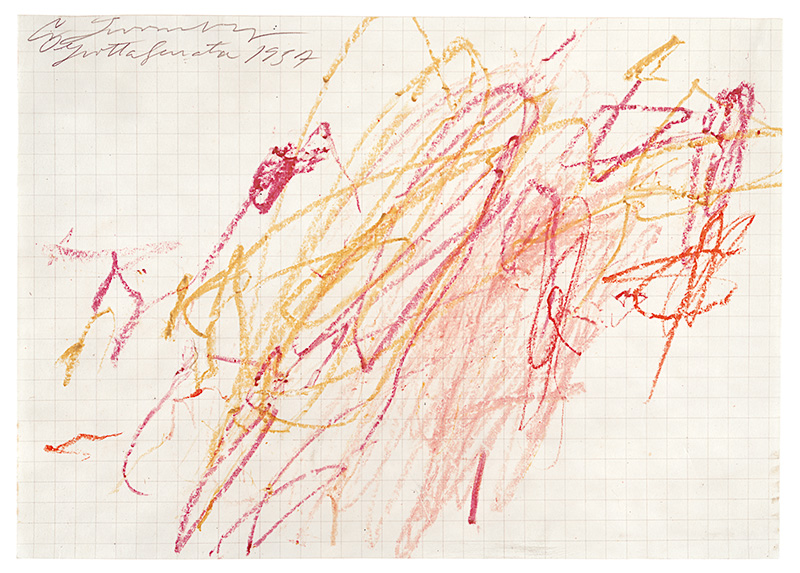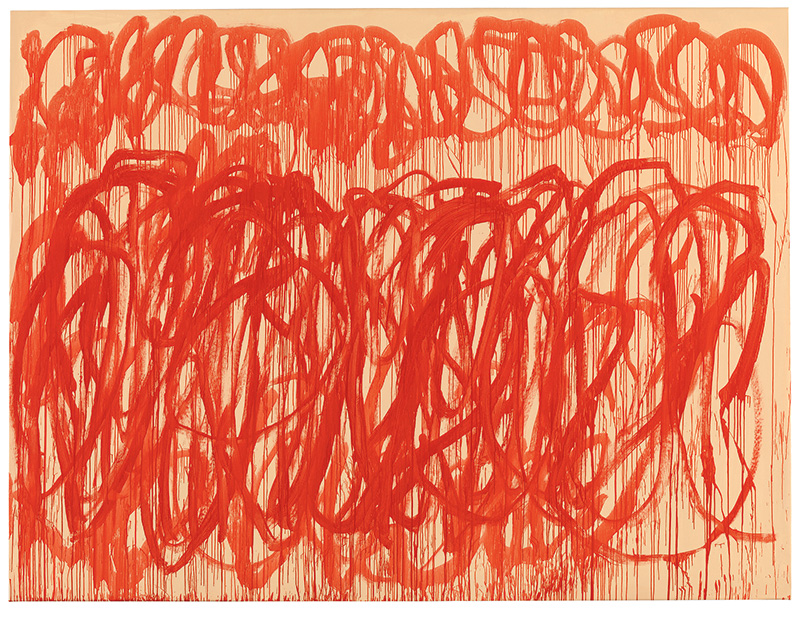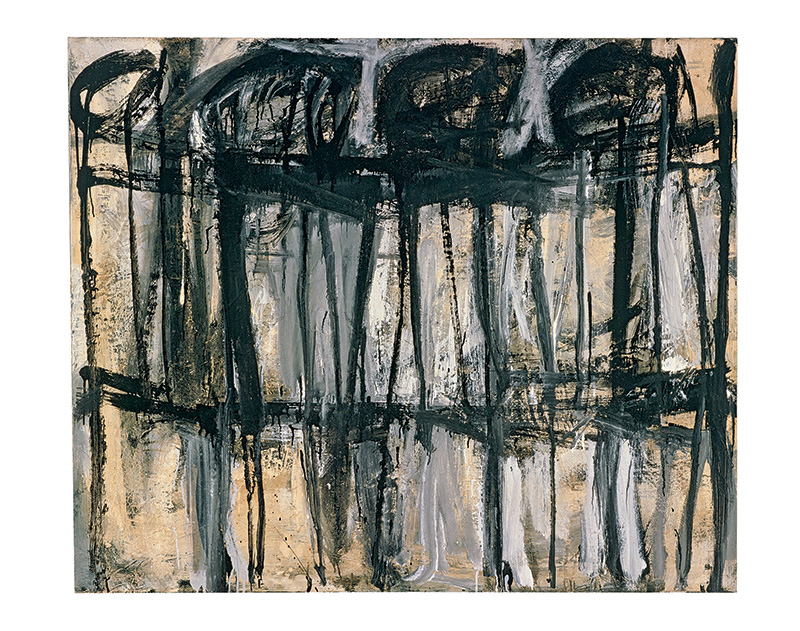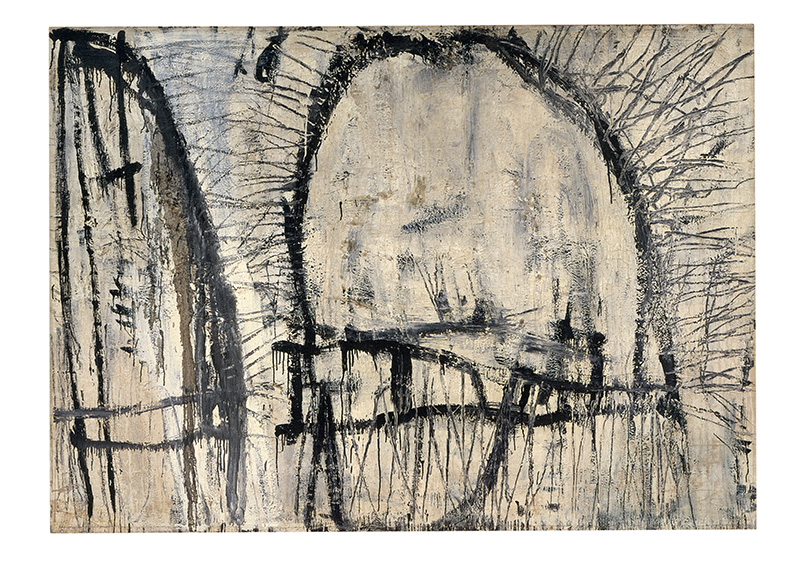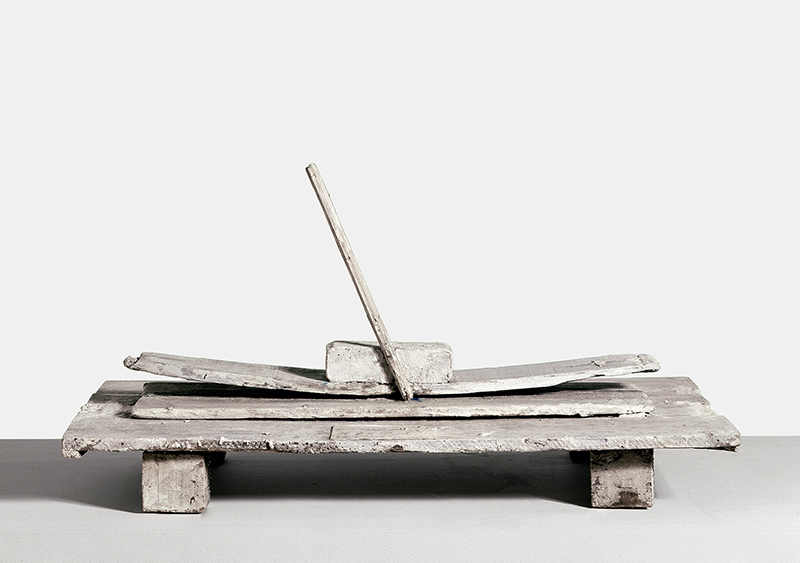ART TRIBUTE:Cy Twombly at Centre Pompidou, Part I

Throughout his 60-year career, Cy Twombly infused the physical and emotional aspects of Abstract Expressionism with a wealth of historic and mythic allusion. He combined elements of gestural abstraction, drawing, and writing in a highly idiosyncratic and potent expression. At once epic and intimate, his work is steeped with references to poetry, classical mythology, and history. The alternation between the visible and the hidden, present and past, the struggle between memory and oblivion are unifying themes in his work (Part II)
By Dimitris Lempesis
Photo: Centre Pompidou Archive
A major retrospective of Cy Twombly’s work is on presentation at the Centre Pompidou in Paris, organized around three major cycles “Nine Discourses on Commodus” (1963), “Fifty Days at Iliam” (1978) and “Coronation of Sesostris” (2000), covering the artist’s entire career in a chronological circuit of 140 paintings, sculptures, drawings and photographs. After leaving Black Mountain College, Cy Twombly, set off on a trip to Europe and North Africa in the company of Robert Rauschenberg. On returning to New York in late spring 1953, he produced his first major works, the sounds of their titles recalling villages and archaeological sites of Morocco. These were followed by white canvases covered in script and its suggestion of triviality. The masterpiece of the decade is the series of white paintings done at Lexington in 1959, which Leo Castelli however refused to show. After Twombly married Luisa Tatiana Franchetti in New York on 20/4/59 April, the couple settled in Rome. Having painted a series under the sign of Eros in the very early part of the decade, in 1962 Twombly turned to death, a theme that finds paroxysmal expression in his first two meditations on the Trojan War, “Achilles Mourning the Death of Patroclus” and “Vengeance of Achilles”. In the early 2000s, Twombly painted a new version of that panel to recreate the triptych, then owned by the French collector François Pinault. Reacting to the Minimalism and Conceptualism that emerged in the United States in the ‘60s, in 1966 Twombly, embarked on a new series of austere paintings, with backgrounds of grey or black inscribed with simple forms or script-like loops in white wax crayon. Among the works are “Untitled (New York City)” (1967), which Twombly would later exchange with Andy Warhol. Twombly’s sculptures might be described as “assemblages, in that they consist of disparate elements. These combinations of found materials are unified by a thin coat of plaster. The white in which they are roughly painted catches the light, bringing out subtle nuances in the surface and giving them a spectral appearance. Sometimes later cast in bronze, these sculptures suggest myths, symbolic objects, archaeological finds, as in ”Winter’s Passage Luxor (Porto Ercole)” (1985). In 1975, Cy Twombly bought a house at Bassano, and after basic renovations he established his summer studio there. Inspired by Homer’s Iliad, he embarked in 1977 on the major cycle “Fifty Days at Iliam”, whose 10 paintings were completed over two successive summers. Another series of paintings is “Coronation of Sesostris”, that punctuate Cy Twombly’s career, differing from the purely abstract series in their incorporation of narrative elements. For the “Bacchus” series, painted in the midst of the Iraq War, the artist remembered again Homer’s Iliad and returned to the very characteristic writing he had explored in the “Black Paintings”. Here, however, he replaced the white wax crayon with red paint evocative of both blood and wine. Between 2006 and 2008, Twombly produced another series on the theme of “Bacchus”. Twombly took up photography at Black Mountain, in 1951 he produced a series of still lifes with bottles and other glass. In Morocco in 1953, he attentively studied the chairs and draped tablecloths of a Tetouan restaurant. But it was only later, on discovering the square format of the Polaroid, that he discovered his own photographic identity. The photographs evoke the places he lived and his interest in sculpture, flowers and plants. When a friend brought him citrons, Buddha’s hands and other citrus fruits, he captured their sculptural and sensual aspect in a series of Polaroids.
Info: Curator: Jonas Storsve, Centre Pompidou, Place Georges-Pompidou, Paris, Duration: 30/11/16-24/4/17, Days & Hours: Mon-Wed & Fri-Sun 11:00-21:00, Thu11:00-23:00, www.centrepompidou.fr


